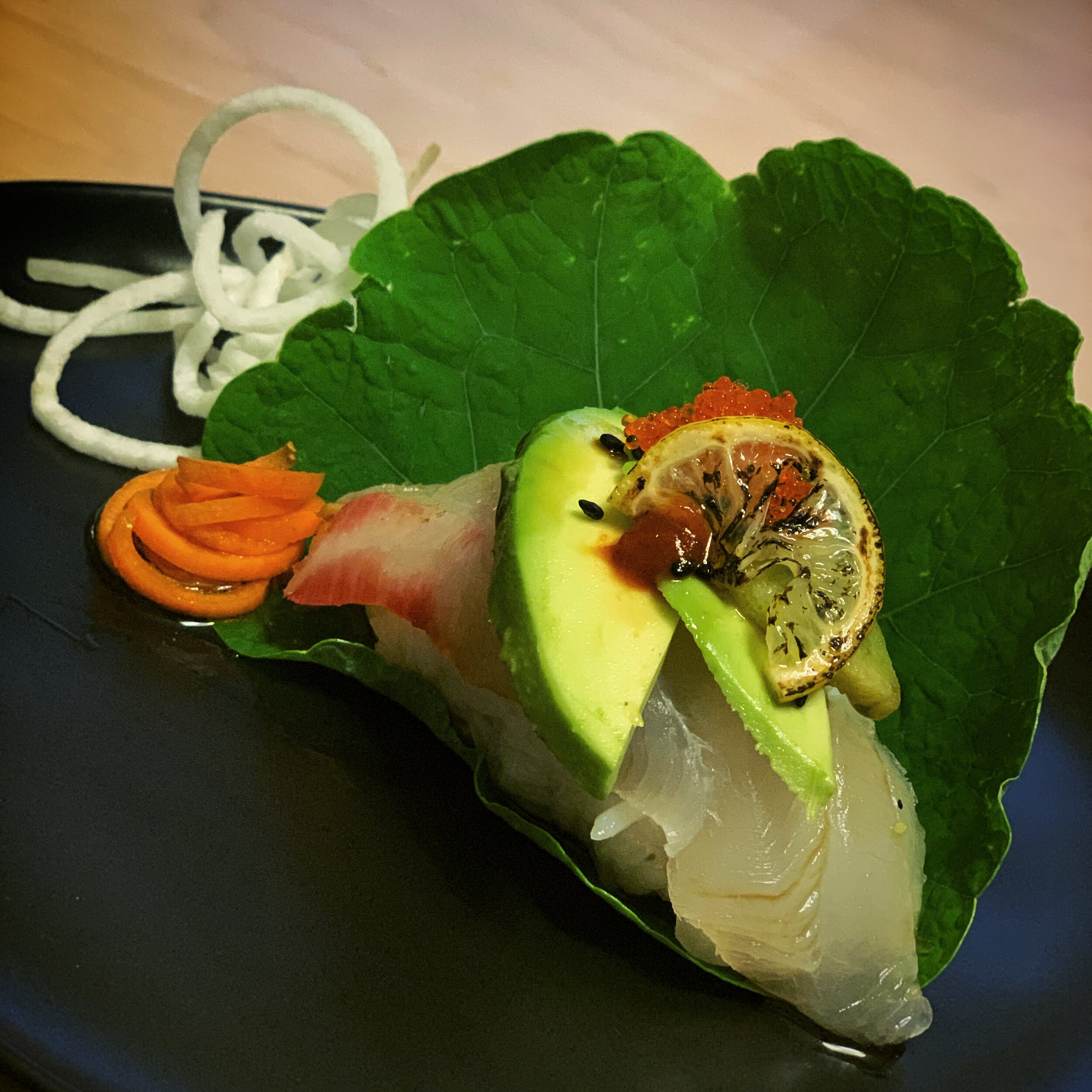Dry Aged Sheephead Sushi
Experiments by Eric Keener
I love foraging, hunting, diving and playing with food. My new favorite thing to do is to age my fish as it develops the flavor and improves the texture (click here for how to age fish). I wanted to play with different flavors so this is not so much a recipe as it is an experiment log (but there are recipes below).
When planning on eating raw fish, it’s important that you shoot the fish in the right spot and meticulously care for it all the way until it’s ready to be eaten. Click here for a 2 part how to guide for making sure your fish meat is top quality. It’s amazing what a kitchen torch will do to flavors. If you’ve never torched a lemon, you need to stop reading this, go to the store, buy a lemon and find yourself a torch. Rubbing burned lemon on your fish meat is off the hook yummy. The same goes for most peppers, from bell pepper to jalapenos. I made some spicy mayo, gochujang, and yuzu ponzu with fresh yuzu from my buddy Matt Bond. Those recipes are below. on a couple, I added some extra sesame oil over the sushi rice which was fantastic as well. If you’ve ever made sushi rice, it’s really easy and super tasty (click for recipe). Other ingredients I played around with were nasturtium leaves, daikon radishes, cilantro, carrot, avocado, sesame seeds, dried seaweed, tobiko and sriracha. A super fun dinner idea is to invite your friends over, put all of the ingredients on the table and tell them to make the best tasting or pretties sushi dish they can think of!
Spicy Mayo: In a food processor, add 2 room temperature eggs and process it for about 20 seconds. Then add 2 Tsp of fresh lemon juice and a pinch of sea salt. Get 1 cup of a neutral oil (e.g. light olive oil, not extra virgin) then in very small drops, slowly add the oil while letting it thicken. Finally add sriracha (as much as you want to make it spicy). Adjust your flavors with lemon juice or vinegar.
Gochujang: In a small blender or food processor, add 1/3 Cup chickpea miso paste, 1/4 Cup pure maple syrup, 1/3 Cup Korean chili flakes, 1/4 Cup coconut aminos, and 5 cloves of minced garlic. Blend it up and adjust the flavor with salt.
Yuzu Ponzu: In large sterilized mason jar, combine 1/2 cup soy sauce, 1/3 cup fresh yuzu juice (or 6 Tbsp lemon juice + 2 Tbsp orange juice), zest from one yuzu fruit, 2 Tbsp Mirin (or 2 Tbsp sake + 2 Tsp fine sugar), 1/2 cup dried bonito flakes, 1 piece kombu kelp (dried kelp, 2” x 3”). Put on lid and shake well. Let it sit for up to a week before using. Using a sieve, separate the liquid from the flakes and seaweed. Use the flakes and seaweed to make Furikake.
Furikake: Using the left overs from the yuzu ponzu, mince the kombu, put the kombu and bonito flakes in a pan on the stove on low and cook until they are dry and separate from each other. Now stir in 1 Tsp fine sugar, 2 Tsp soy sauce, 1/4 Tsp sea salt and cook until all the liquid is gone and ingredients are dry and crispy. Transfer to a tray and once it’s cool, add 1 Tbsp toasted white seasame seeds and 2 Tsp black toasted sesame seeds. Using scissors, thinly cut nori seaweed (the stuff you use for sushi) and mix it all together.

